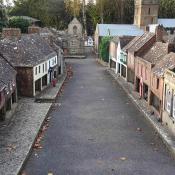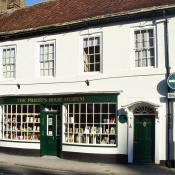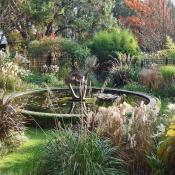The Royal Forest of Cranborne covers an area of around 100 square miles. At the time it was claimed by William the Conqueror in the 11th century, it would have been much more heavily wooded. Today Cranborne Chase is mainly heath and rough pasture, dotted with occasional patches of woodland. It is great walking country and encompasses several small villages.
Early in the 18th century, hunting rights in the forest passed from the crown to the Pitt-Rivers family. The fallow deer can still be found there today. There are several interesting areas of woodland where the ancient art of coppicing is still practised; this cyclic thinning of the growth encourages many forms of wildlife, particularly various species of butterfly.
One of the villages in this area has the curious name of Sixpenny Handley. Apparently this is a corruption of an original Saxon name meaning the hill of the Saxons. Only the name remains of the original village, which was destroyed by fire in the 18th century. The present settlement is much more modern. This is one of the few places in the area where it is possible to stop for food and drink.
Another strange, evocative name is that of a piece of woodland, mainly conifer. This is Great Forlorn, not far from the hamlets of Deanland and New Town. Cranborne offers some lovely viewing points of the surrounding countryside from several of the hills in the area.
Cranborne Village lies at the centre of the Cranborne Estate. The Manor House is one of the homes of the Marquess of Salisbury. The 17th century gardens are open each Wednesday during the season and a garden centre is open all year around. Naturally, the village was visited by Thomas Hardy, as were so many in Dorset, but it has another claim to fame because it was featured in a poem by Rupert Brookes.
Another place to visit in the area is the Dorset Heavy Horse Centre, a few miles away at Edmondsham. Edmondsham House and Gardens are also worth seeing.






